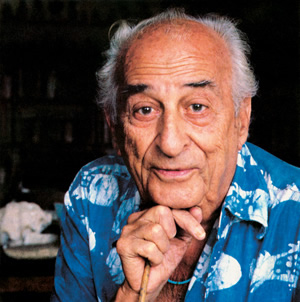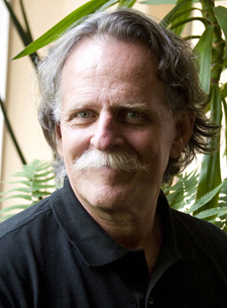Related Research Articles
Orlando (1914–2002) and his brothers Cláudio (1916–1998) and Leonardo Villas-Bôas (1918–1961) were Brazilian brothers who worked in indigenous activism. In 1961 they succeeded in getting the entire upper Xingu legally protected, making it the first massive indigenous area in all South America, and the prototype for dozens of similar reserves all over the continent.

Antoine Hercule Romuald Florence was a Monegasque-Brazilian painter and inventor, known as the isolate inventor of photography in Brazil, three years before Daguerre, using the matrix negative/positive, still in use. According to Kossoy, who examined Florence's notes, he referred to his process, in French, as photographie in 1834, at least four years before John Herschel coined the English word photography.

Héctor Julio Páride Bernabó was an Argentine-Brazilian artist, researcher, writer, historian and journalist. His nickname and artistic name, Carybé, a type of piranha, comes from his time in the scouts. He died of heart failure after the meeting of a candomblé community's lay board of directors, the Cruz Santa Opô Afonjá Society, of which he was a member.

The creation of art in the geographic area now known as Brazil begins with the earliest records of its human habitation. The original inhabitants of the land, pre-Columbian Indigenous or Natives peoples, produced various forms of art; specific cultures like the Marajoara left sophisticated painted pottery. This area was colonized by Portugal in the 16th century and given the modern name of Brazil. Brazilian art is most commonly used as an umbrella term for art created in this region post Portuguese colonization.
Celso Brandão is a photographer who also directed a few documentaries. He can always be found at his headquarters in Carababa Beach, just a few minutes from the city center. Some of his work belong the Pirelli Collection of 1996 He has also received several awards at the Festival do Cinema Brasileiro de Penedo in the years 1975, 1976, 1978, 1979 and 1980. At the moment his is back doing a few documentaries and teaching photography at Federal University of Alagoas.

Gretta Sarfaty, born Alegre Sarfaty, is also known as Gretta Grzywacz and Greta Sarfaty Marchant, also simply as Gretta. is a painter, photographer and multimedia artist who earned international acclaim in the 1970s, from her artistic works related to Body art and Feminism. Born in Greece, in 1947, she moved with her family to São Paulo in 1954, being naturalized as Brazilian.

Claudio Edinger is a Brazilian photographer born in Rio de Janeiro in 1952. He lived in New York from 1976 to 1996.
Pedro Lobo is a Brazilian photographer. He currently lives in Portugal.

Fayga Perla Ostrower was a Polish-Brazilian engraver, painter, designer, illustrator, art theorist and university professor.

Sergio Valle Duarte (born September 26, 1954) is a Brazilian multimedia artist and fine-art photographer.
Lucas Simões is a Brazilian artist based in São Paulo.

Sheila Leirner is a French Brazilian curator, journalist, and art critic, as well as a writer. She was chief curator of the XVIII and XIX São Paulo Art Biennials.
Dudi Maia Rosa is a Brazilian artist.
Waldemar Cordeiro was an Italian-born Brazilian art critic and artist. He worked as a computer artist in the early days of computer art and was a pioneer of the concrete art movement in Latin America.
Hermelindo Fiaminghi was a Brazilian painter, designer, graphic designer, lithographer, professor, and art critic, known for his geometric works and exploration of color.
Geraldo de Barros was a Brazilian painter and photographer who also worked in engraving, graphic arts, and industrial design. He was a leader of the concrete art movement in Brazil, co-founding Grupo Ruptura and was known for his trailblazing work in experimental abstract photography and modernism. According to The Guardian, De Barros was "one of the most influential Brazilian artists of the 20th century." De Barros is best known for his Fotoformas (1946-1952), a series of photographs that used multiple exposures, rotated images, and abstracted forms to capture a phenomenological experience of Brazil's exponential urbanization in the mid-twentieth century.

Instituto Itaú Cultural is a Brazilian not-for-profit cultural institute owned by Itaú Unibanco. The institute was founded by Olavo Egydio Setúbal and created under the Law nº 7505, of 3 October 1986. The institute's goal is to map artistic manifestations and to foster artistic research and production related to all cultural sections.
Vera Chaves Barcellos is a Brazilian artist and educator. She was featured in the Radical Women show at the Brooklyn Museum in 2018.

Hildegard Baum Rosenthal was a Swiss-born Brazilian photographer, the first woman photojournalist in Brazil. She was part of the generation of European photographers who emigrated during World War II and, acting in the local press, contributed to the photographic aesthetic renovation of Brazilian newspapers.

Yolanda Léderer Mohalyi was a painter and designer who worked with woodcuts, mosaics, stained glass and murals as well as more usual materials. Her early work was figurative, but she increasingly moved towards abstract expressionism. With artists such as Waldemar da Costa and Cicero Dias, she opened the way for abstraction in Latin American art.
References
- ↑ Artistas registram últimos dias do Carandiru at Estadão , 27 February 2002.
- ↑ "Cara Brasileira: a brasilidade nos negócios – um caminho para o "made in Brazil"" (PDF). Archived from the original (PDF) on 2010-06-13. Retrieved 2019-02-26.
- ↑ Revista Nossa América.unsufficient ref.
- ↑ Enciclpédia Itaú Cultural de Artes Visuais
- ↑ "John Simon Guggenheim Memorial Foundation 1970 Fellows Page". 2006-04-12. Archived from the original on 2006-04-12. Retrieved 2019-02-26.
- ↑ Rio &Cultura.
- ↑ Instituto Moreira Salles.
- ↑ "DECRETO Nº 55.576". Portal da Assembleia Legislativa do Estado de São Paulo. 17 March 2010.
- ↑ Coleção Archived 2009-07-17 at the Wayback Machine Pirelli / MASP de Fotografia.